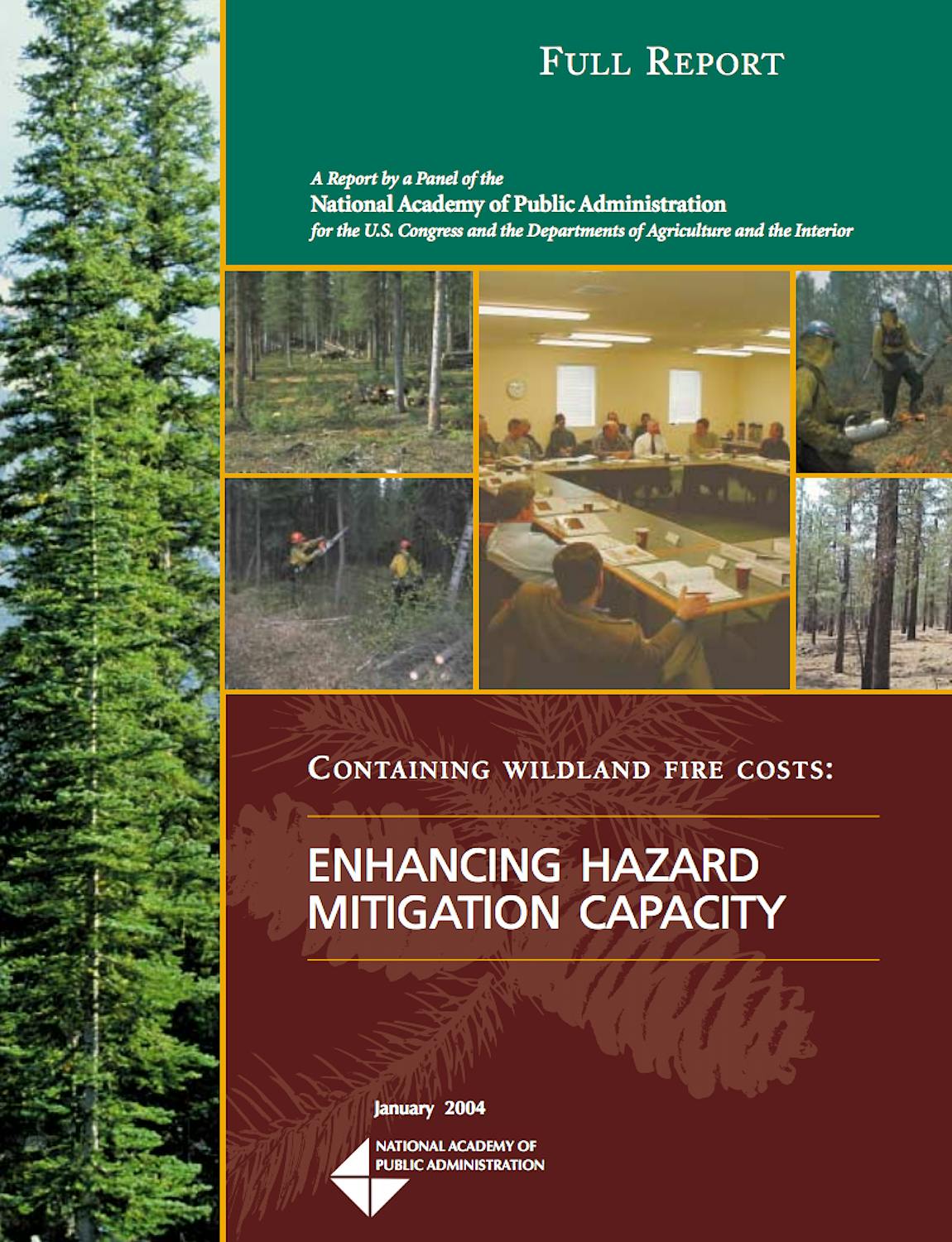
Containing Wildland Fire Costs: Enhancing Hazard Mitigation Capacity
From 2000 to 2004, the Academy published a series of reports on how U.S. wildfire prevention and response could be improved. As part of this series, in 2002, the Academy conducted a study on how to reduce the cost of wildfire suppression, which found that the best way to prevent wildfire damage was to reduce wildfire hazards before fires ignited.
In 2004, the Academy explored this issue further with a new study that examined how to increase capacity for mitigating wildfire hazards. The report described the needs and tools for reducing wildfire hazards in wildlands and communities, the need to develop a wildfire hazard inventory to monitor whether hazards are increasing or decreasing, opportunities provided by federal-aid programs to enable states and localities to play larger roles, and challenges states and communities face in trying to improve and expand their mitigation efforts. The report also presents the Panel’s vision for how all the stakeholders can work more collaboratively in states and community-wide areas to mobilize resources more effectively, by jointly assessing their wildfire risks, implementing mitigation projects, and assessing progress.
Click the button below to view the View Study Report.
View ReportClick the button below to view the View Study Report.
View ReportKey Findings
The Academy Panel made recommendations that would strengthen cross-boundary partnerships, create fire-resistant communities and strategic fuel break systems, reduce heavy vegetative fuel loads, and restore forests.
Recommendations
Specifically, the Panel recommended:
- Congress fully fund the Community and Private Lands Fire Assistance (CPLFA) program authorized by the 2002 Farm Bill;
- Use of CPLFA to provide continuing support to intergovernmental and public-private wildfire partnerships;
- Congress declare its intent that the Federal Emergency Management Agency’s (FEMA) hazard mitigation programs be available to help address wildfire hazards (along with other hazards being addressed through state and local all-hazard plans);
- Acceleration of the LANDFIRE hazard information program to supplement other performance measurement systems used to help improve capabilities for tactical firefighting, strategic mitigation of wildfire hazards, restoration of burned areas, and nationwide performance reporting on progress toward mitigating wildfire hazards;
- The Wildland Fire Leadership Council (WFLC) and federal agencies, including FEMA, actively support intergovernmental and public-private wildfire partnerships in each state and U.S. territory.
